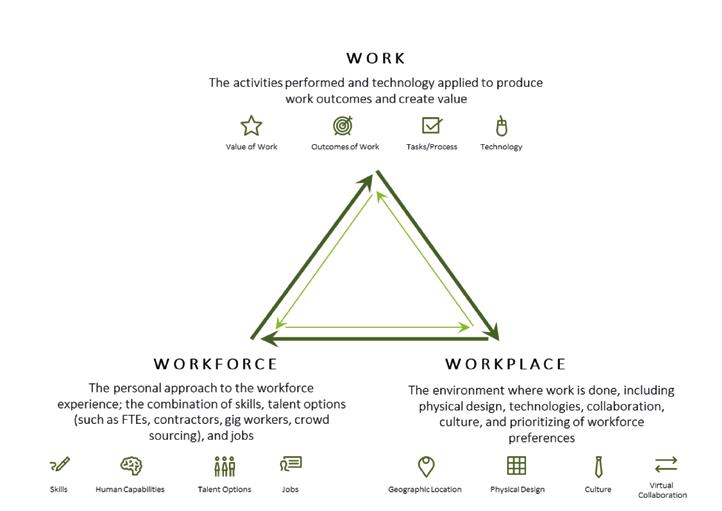INTERNATIONAL HR ADVISER AUTUMN
Business Transformation Through People Engagement, Innovation And Performance I often start my speeches with a seemingly simple question to the audience: ‘How many of you know exactly how many employees you have as of today? Please raise your hand’. Surprisingly, on average, only about 35-40 per cent raise their hands. I then ask those who have their hands up to keep them up for the follow-on question: ‘How many of you know exactly how many employees you will need 18 months from now, and what type of skills they will require?’. Almost all the hands go down, followed by some nervous laughter. Add to this that most organisations struggle to know exactly where their workforces are deployed around the country (or the world) on a given day, and you have a formula for, at minimum, confusion and at worst, dysfunction. Fact is, most leaders in organisations do not have a basic grasp of the make-up of their workforces, both now and in the near future. From the workforce’s perspective, things are equally as challenging. Being forced, in many cases, to work from home trying to get stuff done while living at the centre of a maelstrom of data and technological change, it’s no wonder that people productivity has been declining in most regions, for years. With all the “amazing” technology that we have, one would think we must be significantly more productive than we were, say, 20 years ago. Unfortunately, this is not the case. It is true, studies show that technology and gadgets have made us more productive at home, but when we get to work, it’s like 1997 all over again. We sit at a desk with a PC, a mouse and most of us still use Windows as our interface to the organisation. Additionally, most organisations are constantly throwing new systems and processes at the workforce, with very little training or explanation of what they are supposed to do with the latest system. So, it’s no wonder that most economists are finding that increases in human productivity levelled off around 2004, and are now heading downward.
28
There comes a time when you ought to start doing what you want. Take a job that you love. You will jump out of bed in the morning. I think you are out of your mind if you keep taking jobs that you don't like because you think it will look good on your resume. Isn't that a little like saving up sex for your old age? - WARREN BUFFET
This story of work in 2020, is illustrative of where we are today, yet few would argue against the fact that this is a fundamental aspect of running a business effectively. In fact, many would argue that as a result, they feel like pilots at the helm of an aircraft, in a fog, with faulty navigation systems, with passengers (employees), hanging on for the white-knuckle journey. An extremely uncomfortable position to be in while the turbulent winds of an unprecedented global health and economic crisis buffet us around. So, this begs the question: what would the world of work be like if we could turn technology and technological change to our advantage and use it to match the perfect person to the perfect job in the perfect location? A job that gives purpose, the opportunity to master new things, and the opportunity to be left to get on with that work, without too much interference by others? What if we change the mindset (and processes) to think differently about bringing in new talent and deploying it at the right time, right place, right skills, right motivations. Most would say, this is impossible in today’s workplace – the tools we have are very one dimensional, and are not set up to think and do, differently. Add to this, today’s economic realities in a crisis, where there is a complete focus on quarterly results, profits, cutting costs, growing the top line, saving the taxpayer money (in Public Sector) etc., override many people’s desires and motivations; just get on with the work! Produce more with less, meet objectives, meet the deadline, and at all costs, deliver! Most of us get caught up in these whirlwinds and we put heads down and plod through, quarter after quarter, a treadmill. But does the world of work have to be this way? Is there a different way to do things, a different way to look at things? There is a certain truth to what Warren Buffet says here, however, when one must worry about a mortgage, school fees, a car payment or a student loan to pay back, the mind becomes focused on this at the expense of aspiration and desire. The real reason that so many of today’s workforce ends up in a rut, is far more complex than just pulling up your boot straps and going out to find that perfect job. In fact, many of the reasons people fall into uninspiring work are outside of their control.










